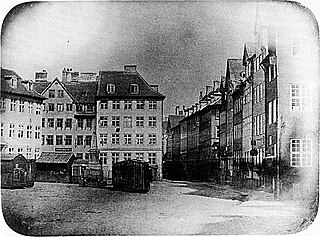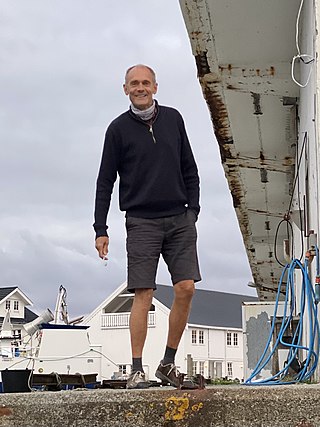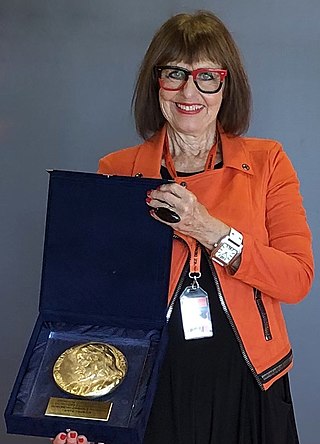Related Research Articles

Damask is a reversible patterned fabric of silk, wool, linen, cotton, or synthetic fibers, with a pattern formed by weaving. Damasks are woven with one warp yarn and one weft yarn, usually with the pattern in warp-faced satin weave and the ground in weft-faced or sateen weave. Twill damasks include a twill-woven ground or pattern.
Arline Fisch is an American artist and educator. She is known for her work as a metalsmith and jeweler, pioneering the use of textile processes from crochet, knitting, plaiting, and weaving in her work in metal. She developed groundbreaking techniques for incorporating metal wire and other materials into her jewelry.

Finn Juhl was a Danish architect, interior and industrial designer, most known for his furniture design. He was one of the leading figures in the creation of Danish design in the 1940s and he was the designer who introduced Danish modern to America.

Kvadrat is a Danish textile company that produces and supplies textiles and textile-related products to architects, designers and private consumers in Europe and worldwide. Kvadrat was established in Denmark in 1968 with deep roots in Scandinavia's design tradition.

In Denmark, photography has developed from strong participation and interest in the very beginnings of the art in 1839 to the success of a considerable number of Danes in the world of photography today.
Monica Ritterband is a Danish artist, who previously worked as a journalist and speaker.
Gerda Henning née Heydorn was a Danish weaver, textile designer and educator.

Clara Marie Wæver was a Danish embroiderer who in 1890 opened a successful business in Copenhagen. Recognized for its high quality, it also provided instruction and training in needlework for young women. In 1903, Wæver enhanced her wares by acquiring the studio where Constantin Hansen's daughters, Kristiane Konstantin-Hansen and Johanne Bindesbøll, had worked, including all its artworks, models and designs. In 1917, she transferred ownership of the business which then became known as Eva Rosenstand Clara Wæver. It survives today in the centre of Copenhagen as Eva Rosenstand.
Karen-Margrethe (Kim) Naver is a Danish designer and textile artist, specializing in weaving and tapestry. Inspired by both coarse Polish techniques and patterns and materials from the Orient, she has been successful in creating textiles for industrial furniture manufacturers, as well as for domestic use. She is recognized as one of Denmark's leading figures in Danish modern textile art. Her silver jewellery designs have been marketed by Georg Jensen A/S.
Inger Lise Warburg née Jensen is a Danish weaver and writer. She has specialized in tapestry using a high-warp loom, coordinating her work with that of various Danish painters including Mogens Andersen and Ole Schwalbe. As a writer, she has published a number of works on textile art, most recently Den strikkende madonna, a collection of essays on the cultural history of knitting.
Brita Drewsen (1887–1983) was a Swedish artist and businesswoman who spent her working life in Denmark, creating household textiles and handicrafts. In 1925, working with the Danish entrepreneur Kaj Dessau, she designed the pioneering interiors of the Copenhagen household furnishings store, now Illums Bolighus, attracting international acclaim. In the 1930s, she collaborated with the weaver Gudrun Clemens, producing rugs, curtains and upholstery at "The Blue Factory" in Lyngby. Together with the designer Bjørn Wiinblad, she created furniture and arranged arts and crafts exhibitions there in the 1970s. Drewsen's early preferences for softly coloured textiles formed an important aspect of Danish design.

Jette Thyssen is a Danish textile artist, painter and lithographer who produces brightly coloured, geometrically patterned compositions. She has decorated many buildings, including the Montmartre Jazz Club in Copenhagen for its opening in 1959 and the town hall in Frederikssund with a tapestry in 1987. Since the early 1970s, she has exhibited widely in Denmark and abroad.

Martin Nannestad Jørgensen is a visual artist living and working in Copenhagen, Denmark. His main medium is textile.
Grethe Søorensen is a Danish textile artist. A pioneer in the field of digital weaving in which she combines traditional craftsmanship with technological innovation, in 2017 she received the Nordic Award in Textiles. Her works are held in the permanent collections of major design museums, including the Cooper Hewitt, Smithsonian Design Museum in New York and Designmuseum Danmark in Copenhagen.

Sigrid Maria (Maja) Andersson Wirde (1873–1952) was a leading Swedish textile artist in the first half of the 20th century. From 1907, she worked for 20 years as a pattern designer for the Friends of Handicraft or Handarbetets Vänner in Stockholm where she created large carpets for Stockholm City Hall and textiles for the transatlantic liner MS Kungsholm. In 1929, she moved to the United States to work for the Cranbrook Academy of Art in Detroit, producing high-quality fabrics and carpets for the newly built Kingswood Girls' School. In 1933, she returned to Sweden where she opened a textile business in her native Algutsboda, employing some 20 embroiderers and weavers to create textiles for churches.

Elna Mygdal (1868–1940) was a Danish textile artist, museum curator and writer. She is remembered in particular for her interest in Hedebo embroidery and for her collection of folk costumes and folk textiles. In 1930, she published the authoritative two-volume Amagerdragter: vævninger og syninger on the history of costumes and textiles from Amager, an island adjacent to Copenhagen.
Margrethe Winkel Agger is a Danish textile artist, tapestry weaver and graphic designer. After a study trip to Mexico, she gained success in 1977 after exhibiting 26 works at the Danish Design Museum. From 1977 to 1994, she was an instructor at the Danish Handicraft Guild until 1994 and has also taught at the Albertslund Art School. Her recent tapestries express nature and animals in her own colourful narrative style. She is particularly active in Odsherred where she has lived since 1985. A member of many art organizations, in 1998 she was a co-founder of Dansk Gobelinkunst, a tapestry weaving association which has brought international recognition to Danish weavers.

Åse Marie Frøyshov is a Norwegian textile artist. Working principally with different types of brightly coloured wool, she has created non-figurative carpets and wall hangings including "Fanfare", an enormous woven wall display for the Tomsø Music Conservatory. Her tapestries often consist of patches arranged in collage-like patterns, extending beyond the edges of a rectangular frame. Textiles for churches, such as altarpieces, altar cloths, rugs and chasubles, can be seen in Rennebu's Innset Church and in Hamar Cathedral. At the 2021 Florence Biennale, Frøyshov was awarded the prize for "Textile and Fiber Art".
Georg Jensen Damask is a manufacturer of home textiles based in Kolding, Denmark. The company was founded in 1756. In 1992, it was appointed as purveyor to the Court of Denmark.
References
- 1 2 3 4 5 Tolstrup, Lisbeth (1994). "Jette Nevers" (in Danish). Kunstindeks Danmark & Weilbachs Kunstnerleksikon. Retrieved 9 February 2023.
- 1 2 "Jette Nevers - Weaver". Langelands Bibliotek. Retrieved 9 February 2023.
- ↑ Sylow, Aase (17 December 2020). "Jette Nevers" (in Danish). lex: Den Store Danske. Retrieved 9 February 2022.
- 1 2 "Jette Nevers". Georg Jensen Damask. Retrieved 9 February 2023.
- 1 2 3 4 Grymer, Claus (14 May 2003). "Hånden og ånden" (in Danish). Kristeligt Dagblad. Retrieved 9 February 2023.